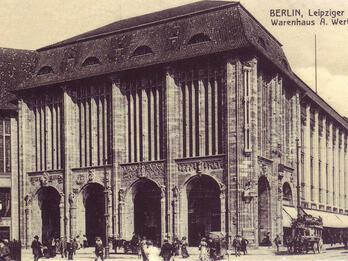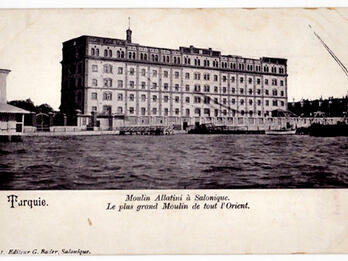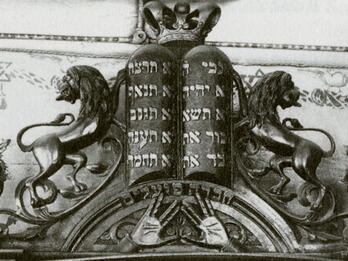Museum of Applied Arts (facing Üllői Street)
Ödön Lechner
Gyula Pártos
1896

Creator Bio
Ödön Lechner
Born in Pest, Hungary, non-Jewish architect Ödön Lechner had early access to the building trade because his grandparents were brick manufacturers. Completing his architecture degree at the Berlin Bauakadamie, Lechner returned in 1878 to Budapest, where he designed buildings in a style that combined classicist and Hungarian folk-art sensibilities, including Budapest’s Drechsler Palace (1884), the Geological Institute Building (1899), and the Hungarian State Treasury (1901). Lechner is best known for his Jugendstil buildings with steel structural supports and Zsolnay terra-cotta that broke free from Gothic, Renaissance, and classicist styles, making his Museum of Applied Arts (1896) an internationally acclaimed building. His expansive portfolio of art-nouveau buildings has earned him the title of the “Hungarian Gaudi.”
Creator Bio
Gyula Pártos
Born Gyula (Julius) Puntzmann in Apatin (today in Serbia), Gyula Pártos studied at the Budapest Polytechnic under Antal Szkalnitzky before finishing his degree in Berlin. He Magyarized his name to Pártos and opened his architecture firm in 1870. Pártos worked with his former schoolmate, Ödön Lechner, on a number of projects, notably Drechsler Palace in Budapest (1886), the Rudolf cavalry barracks in Kecskemét (1887), and the Museum of Applied Arts. In 1896, Pártos married Vittorina Bartolucci, an opera singer, and began working on more projects independently.
You may also like

Wertheim Department Store

Painting of the Żólkiew Synagogue

Lazar Brodsky Choral Synagogue

The Largest Mill in the Orient (Postcard)

Synagogue (Subotica)


